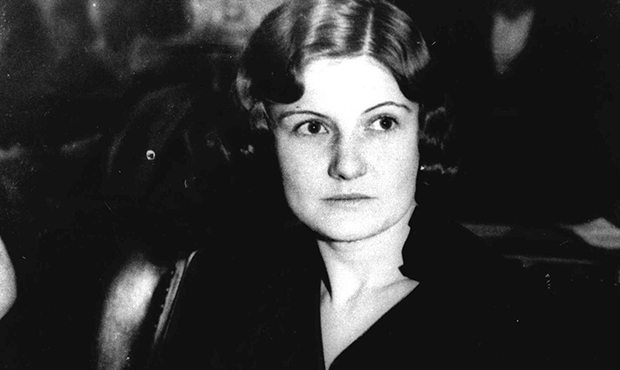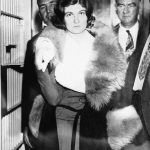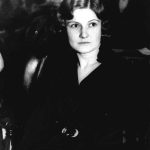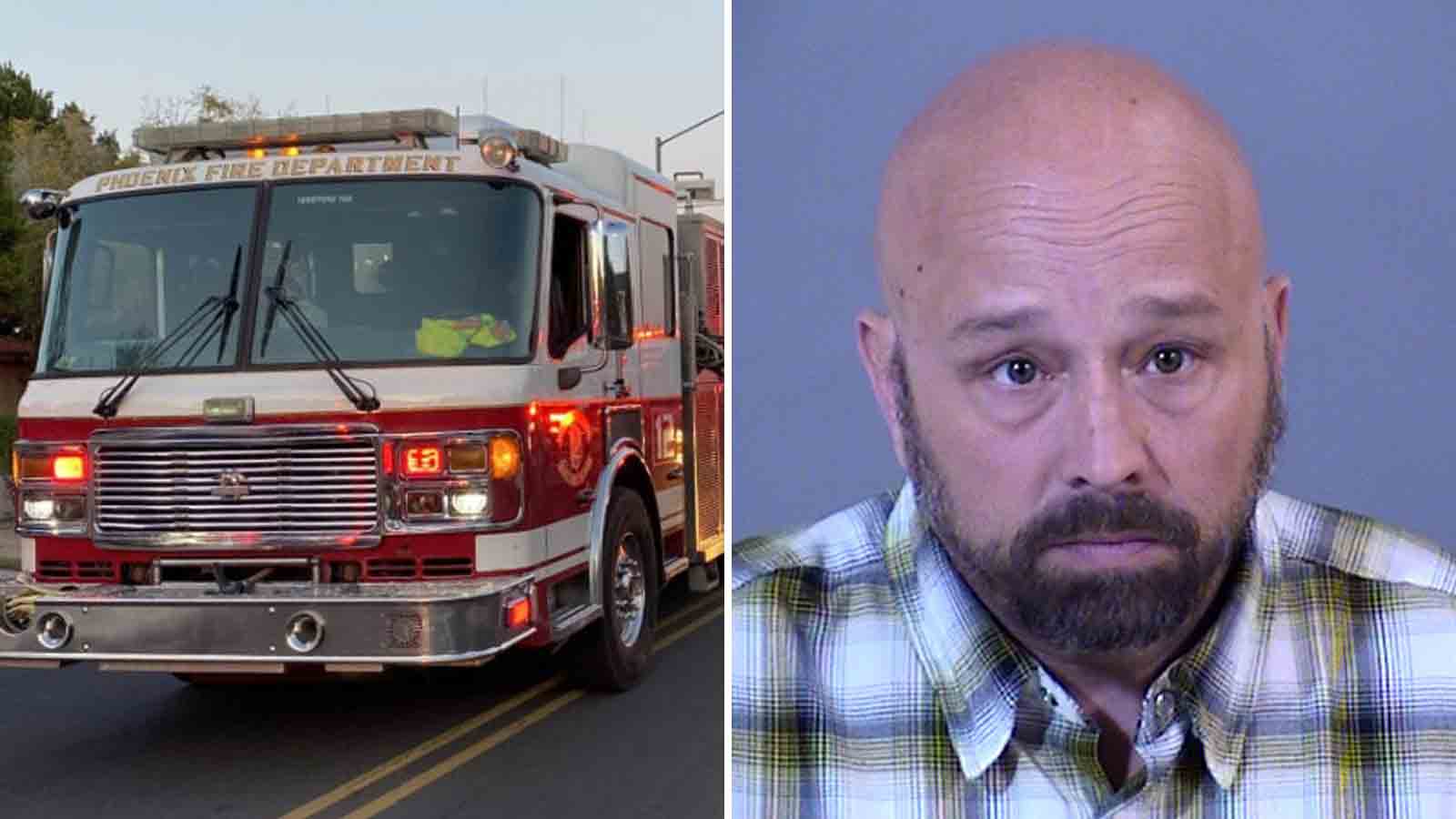Monday marks anniversary of infamous Phoenix trunk murders case
Oct 16, 2017, 9:23 AM | Updated: 1:11 pm

Winnie Ruth Judd is shown sitting in a Phoenix courtroom in 1932. Judd, who spent 40 years in a mental hospital for killing two women and shipping their bodies to Los Angeles, died in her sleep Friday, Oct. 23, 1998 at a friend's Phoenix home. She was 93. Judd became known across the nation as the ``Trunk Murderess'' after she was convicted in the Oct. 16, 1931, murders of Anne LeRoi, 32, and Hedvig ``Sammy'' Samuelson, 24. (AP Photo)
(AP Photo)
PHOENIX — Monday marks the anniversary of one of the most morbid crimes in Phoenix history: The case of Winnie Ruth Judd and the infamous Phoenix trunk murders.
The story begins Oct. 16, 1931. Judd and two other women were involved in an argument over the affections of John J. “Happy Jack” Halloran, a married man and known philanderer.
Judd — who was married to a traveling doctor — and Halloran had been involved in an extramarital affair at one point. She also helped him find other women to spend time with.
According to court testimony, Judd, then 26, became jealous of the two other women during the argument. She pulled out a .25-caliber pistol and shot them both dead inside their rented bungalow near Central Avenue and Thomas Road.
Judd and possibly an accomplice dismembered the body of 24-year-old Hedvig Samuelson, placing her head, torso and legs into a black shipping trunk and divided the rest of her remains between a small suitcase and hat box.
The body of the other victim, 32-year-old Agnes Anne LeRoi, was put whole inside of another black shipping trunk.
Two days later, Judd boarded a train at Phoenix’s Union Station bound for Los Angeles. She was traveling with at least two trunks, a small suit case and a hat box.
A baggage agent in Los Angeles became suspicious of Judd’s luggage because it smelled and there was fluid leaking out. The agent, Arthur V. Anderson, thought she was smuggling deer.
Judd left the trunks at the station and was picked up by her brother, Burton McKinnell. Hours later, police opened the trunks and discovered the bodies, the murder weapon and surgical tools used to dissect the bodies.
McKinnell dropped his sister off somewhere in Los Angeles, where she disappeared for a few days. She surrendered to police on Oct. 23, 1931, inside a funeral home.
It seemed like an open-and-shut case. Judd was fueled by love and jealousy, murdered the women and then tried to hide the bodies.
But there was so much more going on behind the scenes.
One murder, not two?
Judd was only tried for one murder, not two.
Though she was eventually found guilty of the premeditated murder of LeRoi and subsequently sentenced to hang, the dismemberment of Samuelson was never debated in court.
Details were scarce as to why Judd was never tried for Samuelson’s death. It may have had an impact on her appeal, which she won.
Rather than hanging, Judd was sentenced to prison in the Arizona State Asylum for the Insane, located near 24th and Van Buren streets.
She never took the stand.
Things don’t add up
There are still questions surrounding the evidence in the double-murder case to this day, some of which will likely never be answered.
When police went into the bungalow the night of the murders, the public came in with them. The integrity of the crime scene was destroyed.
The police said Samuelson and LeRoi were killed in their beds. However, both mattresses were taken from the home shortly after the murders.
Only one was found, miles away in a vacant lot. There were no blood stains on it.
Phoenix attorney Larry Debus, who worked on Judd’s defense team years later, told the Arizona Republic that the murders were actually self-defense.
He theorized that one of the other women was the first to grab the gun in a fit of rage. Judd — who suffered a gunshot wound to the hand — wrestled it away. But at the end of the day, Samuelson and LeRoi were dead and Judd was holding the smoking gun.
A Phoenix New Times reporter more recently raised questions about Judd’s trial and whether it was fair, saying Halloran was a well-known, wealthy figure in town who may have been protected by a “good old boys” type of arrangement.
Was Halloran involved?
A murky case just gets murkier.
After Judd was sent to the insane asylum, Halloran was indicted by a grand jury as an accomplice in the murders after Judd testified about “the whole truth.”
“I am going to be hanged for something Jack Halloran is responsible for … I was convicted of murder, but I shot in self-defense,” she said in court. “Jack Halloran removed every bit of evidence. He is responsible for me going through all this. He is guilty of anything I am guilty of.”
Judd claimed she was invited to the home and an argument broke out when Halloran arrived with another woman to play bridge. A scuffle broke out, someone went for a gun and Judd wrested it from that person and opened fire.
Halloran’s car was spotted at the home the night the murder was committed. He owned the home and rented it out.
Halloran never took the stand. A judge ruled the case against him was inconsistent and to try him would be “an idle gesture and an expense to the taxpayers of this county.”
Judd would claim several more times that Halloran had helped hatch the plan or, at the least, helped her dispose of the bodies.
Several authors have criticized this idea, not only because Judd had told several different stories, but they could not see a man of Halloran’s social status entangling himself in the murder of two women.
Judd’s husband also came to Halloran’s defense, saying it was “difficult for me to believe that [Halloran] had anything to do with that.”
Who was Dr. Brown?
As with many infamous murder cases, there was an elusive person who may or may not have helped Judd dispose of the bodies.
Theories have said a Dr. Brown was a legitimate doctor who moonlighted in back alleys, possibly performing abortions and other illegal procedures.
Those same theorists alleged that Halloran forced Dr. Brown to help Judd dissect the bodies by threatening him with blackmail. They also claim the purported surgical precision used to dismember the bodies points to a skilled hand.
It was believed Judd had not trained in the field.
Debus laughed off the theory, saying someone would likely risk blackmail instead of wrapping themselves up in a double murder.
However, an author interviewed a nurse, Ann Miller, at the asylum, who said Judd told her that a Dr. Brown was planning to confess to the crime.
The man Judd identified as Brown died a few days later, just before his appointment to come clean.
The lost confession letter
In 2002, the Arizona State Archives received an anonymous donation: A letter supposedly written in Judd’s handwriting.
It contained a full confession to the crime.
In the letter, Judd claimed that the double murder was her idea that she carried out alone, including dissecting Samuelson and moving the body-laden luggage.
She read the letter to her attorney, H.G. Richardson, days after he filed her insanity appeal. Richardson locked it away, thinking it may sink the appeal and send Judd to the gallows.
Escape after escape
Judd was sent to the Arizona State Asylum for the Insane. That doesn’t mean she stayed there.
She escaped a total of seven times, once walking more than 180 miles to Yuma. It was thought some hospital employees allowed her to slip away on more than one occasion.
Her final escape came in 1963, when she used a key given to her by a friend and made her way to San Francisco, California.
She changed her name to Marian Lane and worked as a maid for a wealthy family for six years until she was discovered.
Judd would never return to the asylum. She hired Debus, who struck a deal with then-Arizona Gov. Jack Williams to get her discharged for good.
Judd died Oct. 23, 1998, in north Phoenix.
Lasting legend
The trunk murders remains one of the most infamous crimes in Phoenix’s history.
It has been the focus of several books, including “The Trunk Murderess: Winnie Ruth Judd,” which was used heavily in writing this piece.
The case has inspired several films and screenplays, though only one, “Murderess: The Winnie Ruth Judd Story,” tells the true story of the case. It was released in 2007.
There continues to be a morbid fascination with the case.
Valley Bar, located near Central and Monroe streets, has an art display in its bar area that pays homage to the trunk murders.
The home where the murder took place still stands. It was purchased by a developer last year who said he wanted to restore it.
There is also a tour that follows in the steps of the case.












